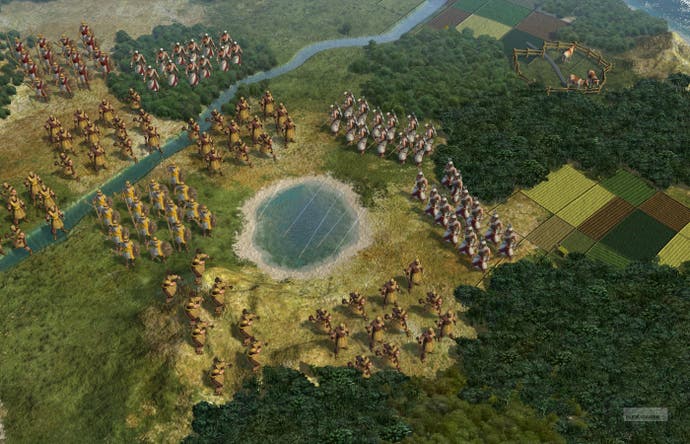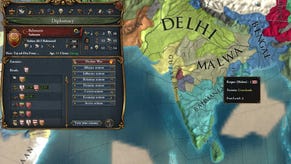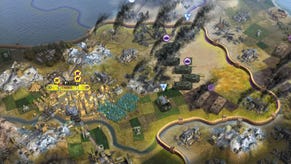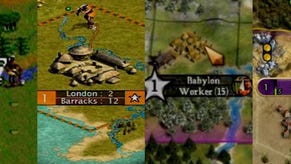Sid Meier's Civilization V
Civil reunion.
When Civilization IV came out - and I'm using the z spelling with the same counter-intuitive courtesy that allows me to refer to drag acts using "she" - it was difficult to say, "Hey! Everyone! This is the big new thing that makes Civ IV the one game in the series that'll make you guff up your lungs, in a way none of the others previously did!"
There was religion, but Civ's a balanced and even-handed affair, so religions were slotted neatly into the tech tree. Moreover, like political systems, each one was a viable gameplay option. And not, as a petty-minded athiest like me was hoping for, an inexorable mental journey from storm-worship to rocket-fuelled godlessness.
Other things changed the game, too. You could open your borders up as part of a diplomatic deal. This is something that was removed for 2008's boiled-down console and handheld version, Revolutions, and the return to the old ways was immediately jarring, making you feel that the new way was indeed the right way.
Great People were introduced, too, giving the series another way of plugging into (and generating interest in) history. But it's difficult to grab headlines with something as cerebral as Sid Meier's Civilization. Having Leonard Nimoy narrate your progress along a tech tree is about as gimmicky as it gets.

So, there we stood. Civilization IV, a critically acknowledged pinnacle of refinement, a homage to itself, and supported like clockwork with the usual strong expansions. Instead of developing itself into a where-next crisis, however, Firaxis has simply moved people around, given fresh young blood Jon Schafer the lead design role, and the unexpectedly eyebrow-raising result is Sid Meier's Civilization V.
Only eyebrow-raising to the fans, of course - this isn't Modern Warfare 2, and the two dominating responses to Civ V will be enthusiastic curiosity and utter indifference. But the attempts to win over the Civ-averse continue, with Civ V taking a few tips on approachability from the console version, all the while preserving the formidable, complex core that attracts the long-term Civ fan.
There's probably been a screenshot by now, so you might already have noticed - hexagons. Finally, Civilisation does away with right-angles. No more grid, where moving diagonally always felt a bit cheaty, being 41 per cent further than vanilla points of the compass. From a purely aesthetic point of view, the hexagons allow for less abruptly contoured land masses, and less crooked channels of water. No-one needs convincing. Two minutes into looking at the board and I've already resigned squares to history.
Hexagons can only simplify the flow of the game - each tile his just six neighbours now, instead of eight - but how much will only come out with a playtest. In the meantime, it's just another tessellating shape.

However, the way the tiles are used is changing as well. They're still a source of resources - rewarding their owner with gold, production, food - and workers will still build improvements to boost that output. But cities no longer expand their area of influence in concentric, grid-based attempts at a circle. Instead every tile is individually painted your civ's colour. One at a time.
Your expansion is still earned by increases in culture (and can now be bought with gold), and you'll earn the tiles as quickly, overall, as your previous empire would have expanded. But now, the permanent and steady expansion and shape of your empire is a more irregular, important and tactically considered process.
The introduction of City States opens new routes of diplomacy. City States are sub-civilisation NPCs which provide bonuses to any player earning their alliance. These bonuses can make them worth defending or reclaiming should they fall to another civilisation. It's also possible that the benefits of diplomacy will be outweighed by their position: a city state too close to your town might need to be destroyed. If you don't mind the reputation as a butcher.
Hands up, then, everyone who's used a strategy that involves piling up stacks of military units and ploughing your way across the board like a poker bully pushing his chips all-in? There's no shame in it. You do what works, especially on the harder difficulties. But Civ V has a stack-blocking new limitation, inspired by Schafer's love of 1994's Panzer General - one military unit per tile.












.png?width=291&height=164&fit=crop&quality=80&format=jpg&auto=webp)



